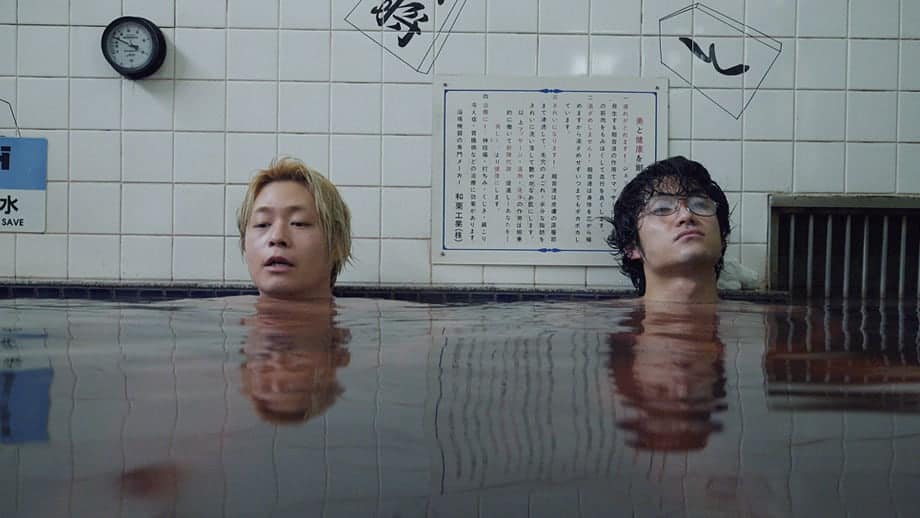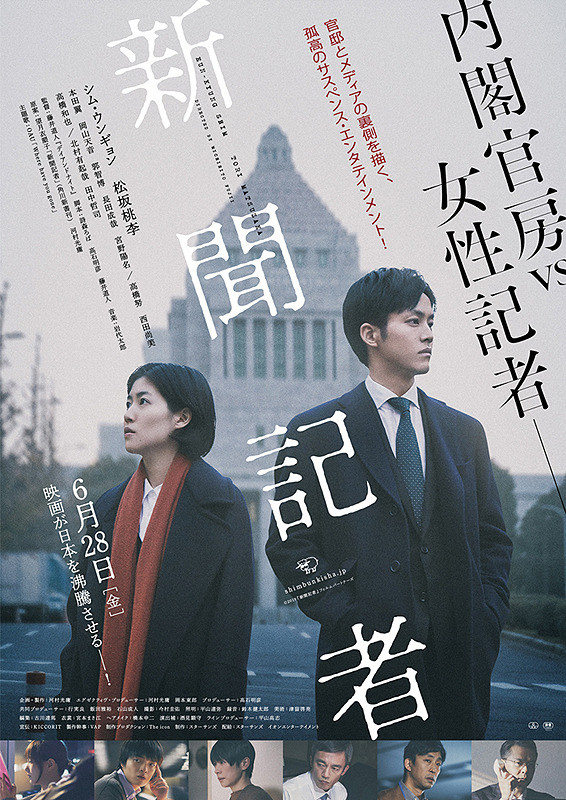|
|
||
|
Pro Tools
FILMFESTIVALS | 24/7 world wide coverageWelcome ! Enjoy the best of both worlds: Film & Festival News, exploring the best of the film festivals community. Launched in 1995, relentlessly connecting films to festivals, documenting and promoting festivals worldwide. Working on an upgrade soon. For collaboration, editorial contributions, or publicity, please send us an email here. User login |
New York: Japan Cuts 2019
As noted by Sight & Sound, 8 of the top 12 highest rated Asian films of all time have been produced by Japan. Akira Kurosawa’s Seven Samurai was identified as the greatest foreign language film of all time in a BBC critics poll in 2018. Japan has won four best foreign language Academy Awards, more than any other Asian country. The reputation of Japanese films has been firmly established. There has, however, been a shift in international interest, to Anime productions which are distinct from the narrative films which formed the basis of Japan’s film reputation. Until the sixties, Japan produced the most films in Asia. Now Japan has been largely surpassed by China and India in terms of production numbers. In 2017 the Japanese film industry was the fourth largest in the world behind the US, China, and India. China is expected to be the largest film producer in 2020. As distinct from China, which produced 1082 films in 2018, Japan produced 613 films in that same year, just three more than in 2016. In 2019. 42 Anime films will be released in the US. I was not able to locate a similar listing for Japanese live action features not falling into that category. Despite this cultural shift, Japanese film festivals in the US have retained their popularity. Apart from North America’s largest Japanese festival, Japan Cuts, recently run by the Japan Society in New York from July 19-28, and the Japan Cuts Hollywood version which ran for three days, there are numerous Japanese film screening events at North American universities and cultural institutions. There are also the Pittsburgh Japanese film festival , the Sacramento and Kansas film festivals, the annual Japanese Currents fest in Portland, and the commercial 2-day Japan Fest in Atlanta which devoted one full program session to new and classic anime films. Japan Cuts 2019 showed 28 features and 9 short films, compared to the 26 features and 16 shorts shown in 2018. Japan Cuts 2019 included 19 first time film makers, ten international premieres, and 16 North American premieres. The festival focused on innovative formal approaches and contemporary social issues. For the festival director, Kazu Watanabe, the emerging filmmakers featured in the program “tackle stories about existential ennui, class conflict and social discrimination, through a range of film making practices that continually subvert expectations and expand our notion of what Japanese cinema is”. Japan Cuts’ shift towards narrative live action features that focused on contemporary issues, sometimes presented through samurai stories, was certainly welcome given the common association of Japanese film with anime exclusively. As in other advanced industrial societies, the theatrical box office is shrinking in Japan, and support for independent productions is limited. Some observers note a creative stagnation of the commercial Japanese film industry. The industry is frequently dominated by TV network and corporate production committees. Alongside an aging population, there is an understandable growth in home viewing. There are also few outstanding Japanese international co-productions as evidenced by their absence in the Japan Cuts program. At the same time, Anime is getting stronger, a market that has been growing since 2009 and is only slowed by the limited supply of anime artists. For the small screen, Matt Schley also reported in the Japan Times that as of December 2018, 186 anime series were under production. Netflix has released its own anime series and has more to come. According to the Association of Japanese Animation analysis in 2018, Anime sales outside Japan accounted for half of the total Anime market. Given linguistic and cultural limitations, live action Japanese feature films are difficult to place in theatrical distribution outside Japan but access the foreign audience through screening services like Netflix. . The 2019 Japan Cuts program was more than welcome. It presented a view of Japan otherwise not accessible.
KILLING, 2018, by Shinya Tsukamoto is a samurai story outspoken in its questioning of traditional violence. The director’s BULLET BALLET, a 1998 black and white thriller celebrating violence and starring the director was included as a classic in the program. In KILLING, set in mid-19th century Japan after the breakdown of the dominant samurai culture, a young, skilled, samurai swordsman named Tsuzuki whot had never been tested in battle is recruited by Sawamura, a drifting masterless ronin, to join him for a battle in the capital after the US navy had arrived. Tsuzuki had been living peacefully with a farmer’s family and reluctantly agrees. He is confronted with the ronin’s glorification of violence and death at all costs. After killing members of a group of vagrants about to commit rape, Tsuzuki cannot find a justification for their deaths. For the ronin Sawamur, a samurai who does not love both his sword and killing has no value. For Tsuzuki, bringing death to others is pointless. The contrast between the martial and humanistic view is as powerful as the stark graphic presentation of violence in KILLING.
MELANCHOLIC, 2018, by Seiji Tanaka was winner of the Best Director Award at the 2018 Tokyo International Film Festival and was the debut film of Tanaka, who was also the writer. He authored a film and story which masterfully presents a complex and meandering narration covering crime, romance, and comedy. Kazahiko has graduated from a prestigious university but cannot find a job while living with his parents. Finally, he is employed by a bathhouse as a cleaner and unwittingly enters the word of the yakuza, operating at his place of work, murdering and disposing of their victims. Without overtly expressing moral constraints or strong convictions, Kazahiko balances the world of crime, in which he gets progressively more involved, his harmonious family life, and his attachment to his girlfriend. He is not gratified by his Tokyo university degree or by the traditional yakuza operation he helps to run but seems to accidentally engage in the actions that result in the disposal of yakuza gangsters and the resolution of his romantic and family affairs.
DEMOLITION GIRL, 2018, Genta Matsagami. This feature received the Japan Cuts award at the 2019 Osaka Asian Film Festival. Matsagami’s first film depicts the struggle of a High School student named Cocoa to move out of her small-town welfare home. She is very intelligent and focused, in stark contrast to her gambling father and mentally unstable brother. Her mother died years ago and her family lives in squalor, relying on Cocoa for maintaining the house and providing cash in addition to the funds the family receives for the alleged disability of the father. She earns some money through selling hot dogs and making fetish videos. When she learns of possibly entering a prestigious university after graduation, and of money left to her by her mother, Cocoa’s determination grows. Even after being told by her father that he had gambled the money away, that her school will eject her because her fetish videos became public knowledge, and encountering gangsters from the video operation, she is not deterred. She wants to escape her underclass conditions and the school where no one shares her background. This film is an almost flawless first feature that I have personally recommended to friends.
THE JOURNALIST,2018, Michihito Jujii. This film had its international premiere at the New York Japan Cuts film festival and deservedly so. It offers superbly structured insights into hidden aspects of Japanese politics and the complacency of Japanese press when it comes to policy makers. This documentary style feature is perfect for the topic given the context of the disingeneus statements of the government to the 2011 Fukushima nuclear disaster, passive responses of the media, , periodic coverups of public scandals and corruption, and traditionally cemented subservice to political leaders. THE JOURNALIST was well received by the Japanese public. It provides perceptive insights into actual official attempts to manipulate public opinion by imposing constraints and even directions on the press. Aa Kaori Shoji put it best by quoting a line from the film, “All Japan needs is a mere facade of democracy”. THE JOURNALIST includes actual events such as the suicide of a finance ministry official who refused to alter official documents tying the current prime mister Abe to a real estate deal benefiting one of his cronies. In a period where the notion of fake news has become popular and investigative journalism and judicial inquiries are questioned and subverted this Japanese film is ideal for our time. THE JOURNALIST shows how investigative reports uncover official plans and steps taken by Japanese officials to establish a biological warfare research facility. Ironically, the film identifies similar research cared out by the Americans. The US Dugway biological weapons lab, also known as the US Army Dogway Proving Ground Lab, has carried out such research intermittently since 1941 and may have used data acquired after 1945 from Japan which had carried out biological warfare research before the surrender.
TEN YEARS JAPAN, 2018, Akkiyo Fujimara, premiered in New York presented a fiction anthology of five brief programs speculating on what Japan might look like in ten years. The perspectives were certainly startling and dystopian but credible with their original views of the future. The two most impressive were GOLDEN SCENE by Chie Hayakawa and MISCHIEVOUS ALLIANCE by Yusuke Kinoshta. In Golden SCENE an overaged Japan is depicted. A Ministry of Welfare Population takes care of those judged to be superfluous. This ministry has deemed that the “country has no future if the number of seniors does not decrease”. The policy is aimed at low income, disabled, and welfare dependent groups. In this society, life prolonging treatments are outlawed. Elders agreeing to die are sedated and perish in factory like settings in small sectioned areas. No decoration or ceremony is part of their dying. In Mischievous Alliance, Kinoshta portrays a school of first graders and young students who are all wired to a central data system and tracked through facial recognition. All behavior, verbal statements, and emotional expressions are recorded. Constant individualized instructions are provided through a device on their ears. Any infraction is met with instant commands and punishments meted out by blasting classical music into their ears. Collected data for each student provides the basis for “moral education” and instructions about the occupations they must select once graduating from school. The instructional staff is subjected to similar indoctrination. The students enjoy a brief moment of freedom thanks to a power failure but system is quickly restored.
Claus Mueller filmexchange@gmail.com
23.08.2019 | Claus Mueller's blog Cat. : Current Japanese film productions G. Matsagami Demolition Girl M. Jujii The Journalist narrative live action films S. Tsukamota Killing FESTIVALS
|
LinksThe Bulletin Board > The Bulletin Board Blog Following News Interview with EFM (Berlin) Director
Interview with IFTA Chairman (AFM)
Interview with Cannes Marche du Film Director
Filmfestivals.com dailies live coverage from > Live from India
Useful links for the indies: > Big files transfer
+ SUBSCRIBE to the weekly Newsletter Deals+ Special offers and discounts from filmfestivals.com Selected fun offers
> Bonus Casino
About Claus MuellerThe EditorUser contributions |




























